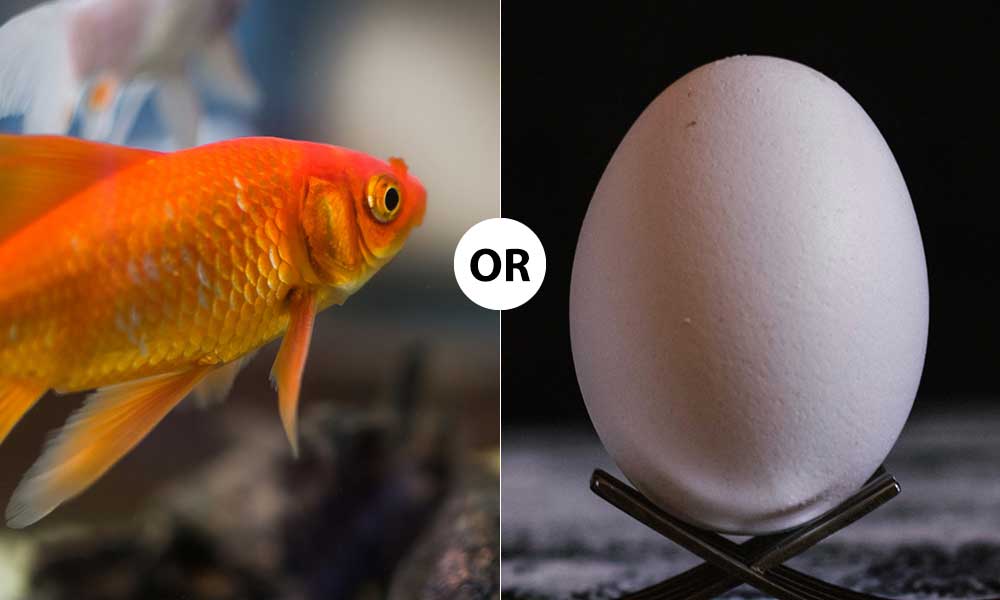When you compare a fish and egg surfboard you can’t help notice the difference in the shape of the tails.
While the tail may be the single element that stands out to some, there are a few other differences to consider when it comes to determining if an egg shape or a fish surfboard should be your next board and which one is better for a beginner or novice surfer.
The trick to getting a new surfboard to better your performance as a novice or intermediate surfer is to get a board that fits your current skill level and provides the right amount of challenge so that you can continue progress your surfing.
Let’s get into more of what that means.
Which Is The Better Surfboard For A Beginner?
Both the egg and the fish surfboard are fun to ride and can be ridden by beginners and intermediates.
The differences in speed, control, and stability often make an egg surfboard a better option for novice surfers who are still developing their basic surfing skills.
To help you understand the differences between the fish surfboard and the egg shape, we’ve put together a little comparison where we’ll look at how they compare with regard to their shapes (nose, tail, rails, width, length) and how they react on the waves (speed, control, drive, stability).
If you’re a beginner surfer struggling to understand the differences between these two surfboards, then this is the guide for you!
Egg Shaped Surfboards
The egg surfboard has been described as a “hidden gem”, an overlooked surfboard design that surfers seem to love once they add it to their quiver.
An egg surfboard is like a cross between a longboard and a shortboard, offering characteristics of both specifically the paddling power of a longboard and some of the turning ability of a shortboard.
Egg boards are wider than fish surfboard and providing more stability that is ideally suited to beginner surfers.
Eggs are also fairly short, which makes them more maneuverable than other high-volume and high-buoyancy boards like longboards and make a great choice for surfers looking to transition from a Wavestorm to their second board.
The actual design of an egg surfboard, including the style, width, and thickness, can vary considerably, but it generally fits the following description:
- A length of between 6′ and 8’5
- Rounded rails
- Lots of width
- An egg-shaped nose and tail
- A thruster 3-fin setup
What Is An Egg Surfboard Good For?
Egg surfboards have a lot of length and width, providing a good amount of volume and stability that help surfers catch waves easily and has a fair amount of maneuverability when you consider its size.
They are good for novice surfers who still want to catch wave like they are surfing a longboard but are ready to add more turning to their bag of surf tricks.
There are also some benefits here for intermediate surfers, namely the ease and fun factoro, but it’s unlikely that advanced surfers will find anything beneficial in an egg surfboard.
Fish Surfboards
Fish surfboards are so named because they have a fish-shaped tail.
These boards are great for surfing in calm conditions, and you can use them to catch waves that other boards would struggle with.
Typically ranging from around 5 to 7 feet in length, fish surfboards are not as big as egg boards and so they are not as suitable for beginner surfers, because they don’t offer the paddle power or stability of an egg surfboard.
A few features of these surfboards include:
- A nose that is quite full but also comes to a point.
- A fish-shaped tail.
- A little thicker and wider than the average shortboard.
- Between 5′ and 7′ on average (although there are bigger fish surfboards available).
- The fin setup varies, but the most common fins are twins and quads.
Is a Fish Surfboard Good for Beginners?
A fish surfboard isn’t the best option for complete beginners.
It’s a little on the short side and beginners typically need something larger and with a lot more volume than what a fish offers.
A fish surfboard can be suitable for intermediate surfers and beginners looking to make a step up, but it’s not suited for complete beginners.
Many advanced surfers and even professionals have fish surfboards in their quivers.
They’re fun boards to ride and also provide a few options when the waves are weak.
If things pick up and there are bigger waves to ride, they just reach for their usual shortboard, but until that point, the fish is a very fun and reliable option.
the Fin Setup on Fish and Egg Surfboards?
As for fish surfboards, they tend to opt for a twin or a quad fin setup while egg boards are often 2+1 or Thruster fin setups.
It’s really up to you and the waves you’re looking to surf.
As a beginner, fin setup is not something you need to focus on too much on.
Just stick with the recommended setups, get a feel for the basics, and once you learn how to handle the surfboard and can actually feel and understand the differences provided by different fins, you can advance.
Intermediate surfers should pay a little more attention to the fin setup, but again, it all depends on how you feel and what kind of waves you’re surfing.







